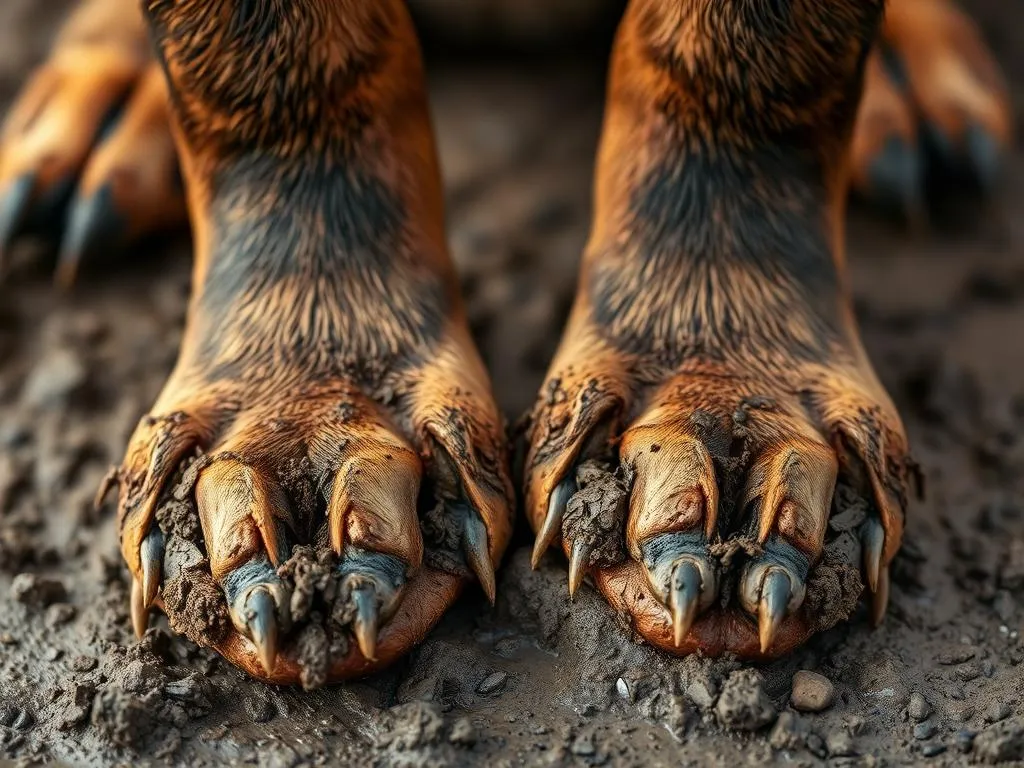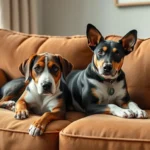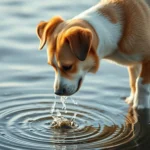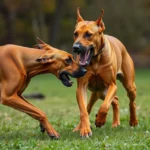
Introduction
As a proud dog owner, you may find immense joy in your furry friend’s playful antics and boundless energy. However, the reality of muddy and dirty dog paws can sometimes overshadow that joy, especially when your pup returns from an adventure outdoors. From muddy prints on the floor to the challenge of cleaning up after a rainy day walk, this issue can significantly affect your lifestyle.
Understanding the challenges associated with muddy and dirty dog paws is crucial for maintaining a clean home and a positive atmosphere. In this article, we will delve into the reasons why dogs end up with dirty paws, explore effective prevention strategies, present cleaning techniques, and suggest lifestyle adjustments that can help you embrace the joys of dog ownership while minimizing the mess. By the end of this guide, you will be equipped with the knowledge you need to tackle the muddy-paw dilemma with confidence.
Understanding the Problem
Why Dogs Get Muddy and Dirty Paws
Dogs are naturally curious creatures, and their love for exploration often leads them into muddy terrains and dirty conditions. Common activities that contribute to muddy and dirty dog paws include playing outdoors, digging, and walks in the rain. Dogs tend to gravitate towards puddles or muddy fields, leaving their paws caked in dirt and grime.
Different types of terrains, such as parks, beaches, or even your backyard, can exacerbate the issue, especially during wet weather. When the ground is saturated, it becomes a magnet for dirt, mud, and other debris, all of which can easily cling to your dog’s paws. Understanding these triggers is the first step in managing the mess.
Impact on Home and Lifestyle
The consequences of muddy and dirty dog paws extend beyond just a little mess on your floor. The impact on home cleanliness can be overwhelming, forcing pet owners to invest extra time and effort into cleaning. Muddy paw prints can become a fixture on your carpets and hardwood floors, creating an ongoing battle to maintain hygiene.
Additionally, the inconvenience of cleaning muddy paws can disrupt daily routines. From wiping down paws after every outdoor adventure to changing clothes frequently due to mud stains, the emotional and psychological toll can be significant. Pet owners often feel stressed when it comes to balancing their love for their pets with the desire for a clean home.
Prevention Strategies
Choosing the Right Time for Walks
To mitigate the issue of muddy and dirty dog paws, timing is everything. Scheduling walks during the best times can significantly reduce the likelihood of encountering muddy conditions. For instance, it’s wise to avoid walks immediately after rainfall or during wet seasons when the ground is likely to be soaked.
Planning your walks around the weather forecast is another effective strategy. If you know rain is predicted, consider taking your dog out earlier in the day or exploring indoor activities instead. By being proactive about when you walk your dog, you can keep those paws cleaner and your home tidier.
Terrain and Route Selection
The routes you choose for walks can make a world of difference in the cleanliness of your dog’s paws. Opt for cleaner walking paths such as paved areas, sidewalks, or well-maintained parks. Avoid dirt trails, especially after rain, as they are more likely to cling mud to your dog’s paws.
Furthermore, consider exploring dog-friendly areas that are specifically designed to minimize mess. Some parks offer gravel paths or well-drained surfaces that can help keep your dog’s paws cleaner. Becoming familiar with the best places for walks in your area can lead to a more enjoyable, mud-free experience.
Using Protective Gear
One of the most effective ways to combat muddy and dirty dog paws is through the use of protective gear. Dog booties have gained popularity in recent years, offering a simple yet effective solution. Not only do they protect your dog’s paws from mud, but they also provide insulation in cold weather and protect against hot surfaces in summer.
When selecting booties, consider the size and breed of your dog. Look for products that feature a secure fit, good traction, and are easy to put on and take off. Investing in a quality pair of dog booties can save you time and trouble when it comes to cleaning those muddy paws after a walk.
Cleaning Techniques
Before Entering the Home
A quick cleaning routine before your dog enters the house can greatly reduce the amount of dirt tracked inside. Portable dog wipes or a damp cloth can be handy tools for wiping down paws while still outside. Alternatively, carrying a portable water bowl allows you to rinse off your dog’s paws before they step onto your clean floors.
Establishing a routine for cleaning paws before entering the house can make your life much easier. By incorporating this step into your daily walks, you can develop a habit that will help minimize the mess significantly.
Indoor Cleaning Solutions
Once inside, having a designated paw washing station can be a game changer. A small container filled with warm water and a towel can serve as an effective paw cleaning solution. Simply dip each paw into the water and wipe off the dirt with the towel before your dog has a chance to shake off the excess mud.
When cleaning indoors, it’s important to use pet-safe cleaning products. Look for biodegradable or eco-friendly solutions that won’t harm your furry friend. Regularly cleaning your floors with suitable products can also help you maintain a more hygienic living space.
Long-term Home Solutions
To further minimize mess in high-traffic areas of your home, consider using mats or rugs designed to trap dirt and moisture. Placing these mats at entrances can help catch any debris before it has a chance to spread throughout your home. Additionally, consider creating a designated area for your dog to shake off and dry their paws.
When it comes to home decor, consider pet-friendly options that are easy to clean. For instance, choosing washable slipcovers for furniture or selecting rugs that can be easily vacuumed can save you time and stress in the long run.
Maintaining Dog Hygiene
Regular Grooming
Maintaining your dog’s hygiene is essential to managing muddy and dirty dog paws effectively. Regular grooming, including baths and brushing, can help keep your dog’s coat and paws clean. Establishing a grooming schedule based on your dog’s activity levels can ensure that they are well-maintained.
For dogs that love to play in muddy conditions, more frequent baths may be necessary. During grooming sessions, pay special attention to the paws, cleaning between the toes and checking for any debris or dirt that may have become lodged. This routine will keep your dog comfortable and prevent any potential health issues related to dirty paws.
Health Considerations
It’s important to note that dirty paws can lead to skin issues or infections if not addressed properly. Regular checks for signs of irritation, redness, or cuts can help you catch potential problems early. If you notice any unusual behavior, such as excessive licking or discomfort, consult your veterinarian for advice.
By maintaining your dog’s paws and overall hygiene, you can avoid the complications that come with muddy and dirty dog paws and keep your furry friend healthy and happy.
Lifestyle Adjustments for Owners
Mindset Shift
Embracing the messiness of dog ownership can be a liberating mindset shift. Instead of stressing over dirty paws, recognize that they are a part of the joy of having a dog. Accepting that some level of mess is inevitable can reduce anxiety and make it easier to enjoy the time spent with your furry friend.
Consider incorporating fun outdoor activities that allow your dog to explore without worrying too much about the mess. Whether it’s hiking, playing at the beach, or visiting dog parks, embracing these moments can create lasting memories and strengthen your bond with your dog.
Engaging in Outdoor Activities
Exploring different outdoor activities can lead to less muddy paws. Consider organized dog sports, obedience training, or even agility courses that provide the stimulation your dog craves without leading to a muddy mess. These activities not only keep your dog entertained but also allow you to bond over shared experiences.
Moreover, engaging in outdoor adventures can enhance your dog’s overall well-being while keeping them cleaner. It’s a win-win situation that can lead to both a happier dog and a tidier home.
Building a Support System
Connecting with other dog owners can provide invaluable support. Sharing tips and experiences with fellow dog lovers can help you find new strategies for managing muddy and dirty dog paws. Whether it’s through social media, local dog clubs, or community events, creating a network of support can make the challenges of dog ownership feel more manageable.
By sharing stories and solutions, you can learn from others who have faced the same challenges. Building a community around dog ownership can foster friendships and create a more enjoyable experience for both you and your pup.
Conclusion
Understanding and managing muddy and dirty dog paws is a key aspect of pet ownership that can greatly influence your lifestyle. By implementing the strategies outlined in this article, you can enjoy the companionship of your furry friend while maintaining a clean and comfortable home.
From prevention techniques and cleaning methods to lifestyle adjustments, every step taken will contribute positively to your experience as a dog owner. Embrace the mess, and remember that the joy of having a dog far outweighs the occasional muddy paw print. We encourage you to share your experiences and tips in the comments below, as your insights could help fellow dog owners navigate the delightful chaos that comes with loving our four-legged companions.









